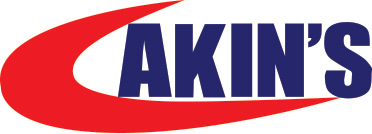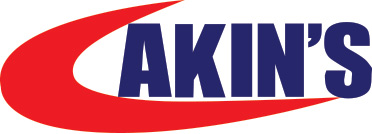
Adremcareers
Add a review FollowOverview
-
Founded Date May 14, 1938
-
Sectors Information Technology
-
Posted Jobs 0
-
Viewed 52
Company Description
Recruitment Advertising: whatever you Need To Know
Recruitment marketing is a critical element of modern-day hiring techniques, developed to bring in top skill by promoting task chances through different channels. Unlike standard job posts, which just list openings, recruitment advertising integrates targeted messaging, company branding, and advanced innovation to reach the ideal candidates at the correct time.

In today’s competitive task market, sticking out as a company is more vital than ever. Companies are turning to recruitment advertising to develop customized, appealing ads that show their brand and attract prospects who line up with their culture and values. By leveraging modern-day tools like social networks, programmatic advertising, and information analytics, recruitment marketing has become an effective method to fill positions more efficiently while improving the prospect experience.

What Is Recruitment Advertising?
Definition and Differences
Recruitment advertising describes the strategic promotion of job chances through various advertising platforms to attract certified prospects. Unlike standard task postings, which are static and often passive, recruitment advertisements actively target potential candidates throughout numerous channels, consisting of task boards, social networks, and even programmatic advertising networks. The goal is to not only display open positions but likewise to highlight the company’s employer brand name and appeal to individuals who might not be actively job searching.
The essential difference in between recruitment marketing and standard job postings depends on the technique. While job posts are generally put on specific job boards where candidates search, recruitment marketing connects to targeted audiences across the web, social platforms, and more, motivating them to engage with the job opening even if they aren’t actively searching for new functions.
Purpose of Recruitment Advertising
The main function of recruitment marketing is to bring in and engage qualified candidates by promoting both specific job opportunities and the general employer brand. A well-executed recruitment ad highlights not just the task, however the company’s culture, worths, and development chances, which are frequently significant decision-making elements for candidates. This form of advertising likewise enables business to strategically target different prospect demographics based upon experience, area, or industry, ensuring that the task advertisement reaches the most relevant audience.
In a crowded task market, recruitment marketing is necessary for standing apart from the competition, making it an essential tool for businesses looking to work with leading talent effectively and efficiently.
The Evolution of Recruitment Advertising
Recruitment marketing has undergone considerable modifications over the past few years, evolving alongside improvements in technology and shifts in how people try to find tasks. Here’s a quick timeline of its evolution:
The Early Days: Print Media
In the early days of recruitment advertising, business primarily relied on print media-newspapers, magazines, and trade publications-to advertise task openings. These ads were restricted by geographical reach and circulation, meaning that job opportunities were mostly seen by regional candidates or those already thinking about the particular publication. This method worked in its time, but it lacked the ability to target particular ability sets or demographics.
The Rise of Job Boards: The Late 1990s and Early 2000s
The introduction of job boards like Monster, Indeed, and Glassdoor in the late 1990s marked a major shift in recruitment marketing. These platforms allowed employers to post job openings online, substantially expanding their reach beyond local prospects. Job boards ended up being the go-to resource for active job seekers, and employers were able to receive applications from a much bigger pool of prospects. However, the technique remained relatively passive, as ads still depended on prospects actively searching for jobs.
The Digital Transformation: Social Media and Programmatic Advertising
The real change in recruitment advertising came with the rise of social networks platforms like LinkedIn, Facebook, and Instagram, along with the development of programmatic marketing in the 2010s. Social media permitted companies to target particular demographics and interests, reaching passive prospects who weren’t actively job searching however might be encouraged by an attractive chance.
Programmatic marketing further transformed the field by automating the ad positioning process, using algorithms and data to position ads throughout numerous platforms, enhancing for reach and significance. This data-driven technique made it easier to customize job ads to particular candidate profiles, ensuring the ideal audience saw the chance at the best time.
The Current Landscape: Data-Driven and Mobile-First
Today, recruitment marketing is highly data-driven, leveraging analytics and AI to continuously enhance advertisement targeting and efficiency. With the prevalent use of smartphones, mobile optimization has actually ended up being vital, allowing candidates to see and look for tasks straight from their devices. The capability to track metrics like click-through rates, conversion rates, and cost-per-click has actually offered companies unprecedented insights into the effectiveness of their recruitment efforts, making recruitment advertising a vital part of modern-day hiring methods.
In summary, recruitment advertising has actually developed from fundamental print advertisements to advanced digital projects that utilize advanced technology to bring in the very best prospects in an increasingly competitive task market.
Types of Recruitment Advertising
Recruitment advertising uses a variety of platforms and techniques to link employers with qualified candidates. Understanding the various types of recruitment marketing enables companies to select the most effective methods for reaching their target audience. Below are some of the most popular options for recruitment advertising.
Job boards like Indeed, Glassdoor, and LinkedIn are a few of the most widely utilized platforms for recruitment marketing. These websites permit employers to post job openings where active job applicants are likely to find them.
– Job boards are typically the very first stop for prospects actively searching for task chances.
– Some job boards enable for advanced targeting, including filters for task location, market, and experience level.
– Many job boards offer pay-per-post or membership designs, making it a cost effective alternative for smaller companies.
Drawbacks:
– Popular task boards are crowded with listings, which can make it tough for a single post to stand apart.
– Job boards mainly bring in active job hunters, limiting your access to passive prospects who may not be actively looking however are still available to brand-new opportunities.
Social Network Ads
Platforms like Facebook, Instagram, and LinkedIn provide extremely targeted social media advertising options for recruitment. Social media advertisements are designed to reach prospects based on their interests, job titles, education, and even behavioral data.
– Social media advertisements allow companies to target specific demographics, interests, and even geographical areas, making it simpler to reach the most appropriate prospects.
– Social network ads tend to be more interesting, with functions like visuals, videos, and even instant application buttons.
– Unlike job boards, social networks advertisements can capture the attention of passive prospects who might not be actively task browsing but could be captivated by the ideal opportunity.
Programmatic Advertising
Programmatic marketing is an extremely automated method of positioning task advertisements across numerous platforms. By utilizing AI and data-driven algorithms, programmatic advertisements are instantly positioned where they are most likely to be seen by pertinent candidates, optimizing reach and efficiency.
Advantages:
– Programmatic advertising conserves time by automating the ad positioning procedure across a variety of channels.
– The automated nature of programmatic ads guarantees that your spending plan is allocated effectively, providing advertisements to the ideal audience at the correct time.
– Real-time data is used to continually enhance the targeting and performance of your ads.
Pay-Per-Click (PPC) Ads
PPC recruitment advertisements charge companies for each click an ad gets. These ads can be put on task boards, search engines, or social networks platforms and are an economical method to guarantee that you only pay when someone engages with your task listing.

How It Works:
– Like other digital advertising techniques, PPC ads allow you to target specific demographics or job applicants by their task title, location, or experience level.
– You pay only when somebody clicks your advertisement, which can result in a high roi (ROI) when targeted properly.
Traditional Media
While digital platforms control recruitment advertising today, traditional media-such as print, radio, and billboards-still contribute in certain markets and geographic areas. These techniques can be effective when targeting regional prospects or reaching audiences who might not utilize online job search platforms regularly.
Benefits:
– Traditional media can be particularly helpful for regional or niche markets where particular skills are in need.
– In some markets, fewer competitors use standard media, which permits your recruitment ad to stick out more quickly.
The Importance of Employer Branding in Recruitment Advertising
Defining Employer Branding
Employer branding refers to the credibility and understanding of your company as an employer, both to prospective candidates and existing workers. In recruitment advertising, your employer brand plays a vital role in bring in prospects who resonate with your business’s worths, culture, and objective. A strong company brand name exceeds simply a job opening-it displays why your business is a desirable location to work.
In today’s competitive talent market, recruitment marketing is more efficient when it shows a business’s culture and workplace. Candidates are looking for more than just a paycheck-they would like to know what makes your company unique and whether it aligns with their personal and professional worths.
Tips for Building a Strong Employer Brand
Building a strong employer brand in recruitment advertising requires a thoughtful approach. Here are some actionable tips:
– In your recruitment advertisements, plainly communicate your company’s worths, workplace, and team characteristics. Use language that lines up with your brand name’s tone, whether it’s casual, innovative, or expert.
– Candidates are interested in what they can gain by joining your team. Make certain your recruitment ads highlight crucial advantages such as flexible work choices, medical insurance, profession advancement programs, and opportunities for development.
– Ensure that your company branding is constant across all recruitment marketing channels, whether it’s on social networks, task boards, or programmatic ads. A cohesive message enhances the strength of your brand name and makes an enduring impression.
Showcasing Employee Testimonials
Among the most effective methods to build credibility and rely on recruitment advertising is by featuring staff member reviews. Potential prospects are more most likely to engage with a job advertisement when they hear directly from current staff members about their experiences at the company.
Why Employee Testimonials Matter:
– Real employee stories provide a real point of view of what it resembles to work at your company.
– Candidates are more most likely to trust testimonials from peers than basic business messaging.
– Use reviews to showcase different elements of your office culture, from team collaboration to career advancement.
Incorporating staff member testimonials in your recruitment ads-whether in video format or as quotes-can humanize your business and make the job opportunity more enticing. It’s an efficient way to separate your recruitment marketing from rivals and build trustworthiness.
Writing Effective Recruitment Ad Copy
Effective recruitment marketing starts with well-crafted advertisement copy that resonates with the best candidates. Writing clear, concise, and engaging job descriptions is necessary to attracting leading talent and ensuring your advertisement stands out.
Crafting Engaging Job Descriptions
Creating job descriptions that record attention is key to effective recruitment advertising. Here are some strategies to craft appealing descriptions:
– Avoid jargon or excessively complicated language. Use straightforward sentences that clearly detail the task role, responsibilities, and credentials. Candidates should instantly comprehend what the task requires and whether they’re certified to apply.
– Make your task description more than just a list of requirements. Write in a way that shows your business’s culture and job speaks straight to the prospect. Use a friendly and welcoming tone if suitable for your brand name, or professional and formal if that’s more fitting.
– Don’t just explain the job-sell the opportunity. Highlight essential advantages, such as versatile hours, professional advancement, or chances for career advancement. Candidates are more most likely to apply if they can see how the role fits into their personal and professional goals.
Crucial Element to Include
When creating recruitment ad copy, including vital details guarantees the advertisement is helpful and actionable. Here are the crucial elements to include:
– Ensure the task title is precise and frequently utilized in the market. This helps the ad rank much better in search engine result and ensures the candidate knows what the function requires.
– Be clear about the task area, specifically if remote or hybrid work choices are readily available.
– List the core responsibilities of the position, focusing on what the candidate will be doing day-to-day.
– Include the abilities, experience, and education needed for the function. It’s valuable to separate required qualifications from chosen qualifications.
– Every recruitment ad need to end with a strong CTA, encouraging prospects to apply. Phrases like “Apply now to join our group” or “Submit your application today” can increase engagement and lead to more conversions.
Tailoring Ads to Different Audiences
To make your recruitment advertising more efficient, customize your ad copy to the particular audience you wish to reach. Consider the following approaches:
– Use terms and references familiar to the industry you’re targeting. For example, if you’re working with in tech, include language about coding languages or software platforms.
– Adjust the tone and information of your ad based on the prospect’s experience level. For entry-level positions, stress training and mentorship chances. For more skilled functions, highlight management chances and complicated task involvement.
– If you’re targeting particular demographics, such as recent graduates or experts in a specific geographical place, discuss perks like relocation help or versatile working hours that interest their needs.
Targeting the Right Audience in Recruitment Advertising
Effective recruitment marketing has to do with reaching the best individuals at the correct time. Targeting ensures your ads are seen by the most appropriate candidates, increasing your possibilities of drawing in qualified applicants.
Demographics and Skills
Among the most essential elements of recruitment marketing is targeting candidates based on their demographics and skills. This guarantees that your ad reaches people who fulfill the qualifications for the task. Consider the following elements:
– Factors such as age, education level, and market experience can assist narrow down your prospect swimming pool. Use tools available on platforms like LinkedIn or Facebook to set market filters when putting your ads.
– Concentrate on targeting candidates with the specific ability needed for the role. Programmatic advertising platforms, job boards, and social media allow for skill-based targeting, guaranteeing that your task advertisement appears in front of people with the right qualifications.
Using Data for Precision Targeting

Recruitment marketing today relies heavily on data to enhance targeting accuracy. Digital platforms like social networks and programmatic ads utilize in-depth data on user behavior, interests, and certifications to deliver your recruitment advertisements to the most appropriate audience. Here’s how you can utilize information for precision targeting:
– Platforms track prospect behavior, such as browsing history and engagement with similar task ads. Leverage this information to target users who have shown interest in comparable roles.
– Ads on social networks platforms can be served to individuals based on their interests and online activities, assisting you reach passive candidates who may not be actively task searching but match your perfect profile.
– Many marketing platforms offer the option to create lookalike audiences based upon the profiles of your current workers or previous successful hires, broadening your reach to comparable prospects.
Geographic Targeting
Geographic targeting guarantees your recruitment ads show up to prospects in the best areas, whether you’re employing in your area, regionally, or worldwide. Here’s how to optimize geographical targeting in recruitment advertising:
– For roles that require on-site work, target candidates within a certain radius of your area to guarantee you attract local skill.
– If you’re open to a broader location, think about targeting neighboring cities or areas where your market prevails.
– If you’re wanting to fill a function with specialized skills, consider targeting worldwide, particularly for remote positions.
Using Data and Analytics to Optimize Recruitment Ad Campaign
Data and analytics play a critical function in optimizing recruitment ad campaign. By analyzing the efficiency of your ads, you can determine what is working, what isn’t, and how to change your method to attain much better results. This continuous optimization procedure allows you to get one of the most value out of your recruitment budget plan while ensuring your ads are attracting the ideal candidates.
Tracking Performance Metrics
Among the primary steps in enhancing recruitment marketing is to track essential performance metrics. Click-through rate (CTR) is among the most essential metrics, as it demonstrates how many individuals are engaging with your ad by clicking it. A higher CTR shows that your ad is resonating with your target market, while a low CTR suggests that changes may be essential to the ad copy or design.
Another critical metric is cost-per-click (CPC), which determines just how much you’re spending for each click your ad. Lowering your CPC without compromising the quality of clicks is a crucial objective in enhancing your advertisement budget plan. Additionally, conversion rates tell you the number of of those clicks are resulting in wanted actions, such as submitting an application. A low conversion rate might signal that while prospects are interested in your ad, the application process or job description might not be compelling enough.
Understanding these metrics is essential for making data-driven choices that boost your total recruitment marketing efficiency.
A/B Testing in Recruitment Advertising
A/B screening is an effective technique for enhancing your recruitment ads by comparing 2 different versions of the very same ad to determine which carries out much better. By testing variations in advertisement copy, visuals, or targeting criteria, you can collect insights on what works best for drawing in candidates.
For instance, you may test two various headings to see which one amasses more clicks or applications. Perhaps one heading highlights the advantages of working for your company, while the other concentrates on the particular job function. A/B testing allows you to experiment and make decisions based on real efficiency information, rather than presumptions. Testing visuals, such as images or videos, can also offer valuable insights into what captures a prospect’s attention and prompts them to engage with your advertisement.
Through constant A/B screening, you can fine-tune your recruitment advertisements to be more reliable, guaranteeing that each iteration performs better than the last.
Adjusting Strategies Based on Data
Once you have actually gathered performance information and conducted A/B tests, it’s essential to adjust your recruitment marketing method accordingly. If your CTR is lower than expected, it may be time to review the copy or style of your ad. You may require to tailor your message more carefully to your target audience or make the call-to-action more compelling. Similarly, if your conversion rate is low, think about revisiting the task description or the application process to ensure it aligns with the expectations set by the ad.
Budget allocation is another location where information can guide your choices. Ads with high engagement and conversions need to receive more financial investment, while underperforming ads can be paused or modified. By reallocating resources toward the best-performing advertisements, you make sure that your recruitment advertising spending plan is utilized effectively.
Optimizing your recruitment marketing campaign using data and analytics is an ongoing process. Regularly keeping track of metrics, conducting A/B screening, and making data-driven modifications will assist you continually enhance the performance of your ads, draw in better prospects, and attain your recruitment goals more effectively.
Budgeting for Recruitment Advertising
Setting an efficient budget for recruitment marketing needs cautious planning. Factors such as company size, working with requirements, and the competitiveness of the task market will figure out how much you need to invest. A well-structured budget plan assists you allocate resources where they’ll provide the best outcomes, ensuring you bring in the right talent while keeping costs workable.
Setting a Budget Plan for Recruitment Advertising

To figure out an appropriate recruitment marketing spending plan, start by considering your general hiring requirements. Companies with frequent hiring requirements might need to invest more in continuous marketing, while businesses with periodic recruitment can assign a smaller sized, more targeted spending plan. Additionally, the complexity of the roles you’re hiring for must influence your spending. Hard-to-fill or specific niche positions might need a larger investment to reach competent candidates.
Assess the typical cost of putting advertisements on different platforms, and set a month-to-month or quarterly spending plan that enables versatility. It’s likewise important to monitor your costs regularly, making modifications based upon the performance of your advertisements and evolving recruitment requirements.
Mobile-Friendly Recruitment Ads
As mobile devices become the primary tool for job searching, it’s important to guarantee your recruitment advertisements are enhanced for mobile users. Mobile-friendly advertisements not only enhance the prospect experience but likewise assist you reach a wider audience.
The Importance of Mobile Optimization in Recruitment Advertising
Mobile job searches have actually skyrocketed in the last few years, with many candidates relying on their smart devices to browse listings and obtain tasks. If your recruitment ads aren’t optimized for mobile phones, you risk losing out on possible prospects. Mobile optimization is necessary for delivering a seamless experience-candidates need to be able to see your advertisements, browse your career pages, and apply quickly, without technical troubles.
By making sure your advertisements load rapidly, are easy to continue reading little screens, and include an easy application procedure, you’ll increase engagement and bring in more high-quality candidates.

Best Practices for Mobile Ads
When producing recruitment ads for mobile, simplicity is crucial. Short, concise text and clear visuals make it simpler for prospects to comprehend the job opportunity at a look. Ensure that your ads load rapidly to prevent users from deserting the procedure, and enhance the application form to reduce steps and fields. A mobile-optimized application procedure can significantly improve your conversion rates, as candidates are more most likely to finish an application if it fasts and simple on their gadget.
Creating Visual Content for Recruitment Ads
In the competitive world of recruitment marketing, visual content plays a vital role in grabbing attention and engaging prospective candidates. High-quality images, videos, and infographics can make your advertisements stand job out and display your employer brand in a compelling way.
Why Visual Content Matters in Recruitment Advertising
Visual material has ended up being a necessary part of recruitment advertising since it allows you to communicate better with candidates. Instead of relying exclusively on text, visuals can highlight essential elements of your company culture, work environment, or job benefits. This assists candidates get a clearer photo of what it’s like to work for your company and can increase their interest in using.
In specific, video material can be incredibly powerful in recruitment advertising. Videos that feature employee testimonials or behind-the-scenes take a look at your office supply an authentic peek into your company, assisting to construct trust and engagement with possible candidates.
Types of Visuals to Use in Recruitment Advertising
There are numerous kinds of visuals you can use to boost your recruitment advertisements. Employee reviews, whether in the kind of brief videos or quotes, offer candidates an individual connection to your company. Office tours or group activity videos can showcase the environment and highlight what makes your workplace special. Infographics are another reliable tool, helping to break down complicated info, such as job benefits or role obligations, into easy-to-digest visuals.
Tips for Producing Effective Visuals
To create visual material that resonates with candidates, it’s important to make sure consistency with your employer brand. Use visuals that show the tone and style of your company culture, and keep them expert yet engaging. Buy premium production to guarantee your visuals look polished and enticing, and focus on creating material that feels genuine-avoid extremely scripted or staged circumstances, as these can appear inauthentic.
By integrating engaging visuals into your recruitment advertising strategy, you can boost engagement and improve the general efficiency of your job advertisements.
Recruitment Advertising Trends and Future Directions
The landscape of recruitment marketing continues to evolve, driven by technological advancements and shifts in candidate expectations. Remaining on top of emerging trends is crucial to preserving an one-upmanship and drawing in leading skill.
Artificial Intelligence (AI) and Automation in Recruitment Advertising
AI and device learning are changing recruitment advertising by making ad positionings more accurate and effective. These technologies analyze huge amounts of data to anticipate which platforms and audiences are most likely to engage with job advertisements. Automated tools can adjust targeting in real-time, ensuring that recruitment ads are shown to the best candidates at the optimal time. This level of automation not only improves the efficiency of advertising campaign but likewise saves time and lowers expenses.
Video and VR/AR Recruitment Ads
Making use of video material in recruitment advertising is ending up being popular, as it permits business to provide more dynamic and interesting messages. Short videos showcasing the company culture, workplace environment, and worker testimonials are reliable methods to get in touch with prospective prospects.
Virtual reality (VR) and augmented reality (AR) are likewise gaining traction in recruitment. These immersive technologies enable prospects to experience a virtual tour of the work environment or take part in interactive task previews, offering a more interesting way to attract interest and enjoyment about the role.
Diversity and Inclusion in Recruitment Advertising
Promoting diversity, equity, and inclusion (DEI) in recruitment marketing is a growing pattern. More business are acknowledging the value of producing job advertisements that reflect their dedication to a diverse workforce. This includes utilizing inclusive language, showcasing varied teams in visuals, and highlighting the business’s DEI initiatives. Effective methods include highlighting staff member resource groups, providing flexibility for different requirements, and making sure the task descriptions interest a broad variety of candidates.
By concentrating on variety and inclusion in recruitment ads, business can attract a wider, more varied talent swimming pool, while enhancing their employer brand as an inclusive work environment.
Compliance and Legal Considerations in Recruitment Advertising
Recruitment marketing must not just be creative and interesting however also stick to legal requirements. Ensuring compliance with employment laws is vital to avoid potential legal concerns.
Abiding By Employment Laws
All recruitment advertisements need to adhere to labor laws and anti-discrimination regulations. This consists of guaranteeing that advertisements do not include language that could be perceived as inequitable based on race, gender, age, or other protected categories. It’s crucial to stay upgraded on regional, state, and federal laws associated with hiring practices and guarantee that all recruitment material is examined for legal compliance before publishing.
Transparency in Job Ads
Transparency in recruitment advertising is key to building trust with prospects. Clearly detailing task requirements, duties, compensation, job and benefits is vital to avoid misunderstandings and make sure prospects know precisely what to anticipate. Companies must also avoid deceptive language that might result in candidate discontentment or legal challenges. By maintaining clarity and honesty in recruitment ads, companies can develop a positive reputation and draw in candidates who are an excellent suitable for the function.
In today’s competitive working with landscape, contemporary recruitment advertising strategies are vital for attracting top skill. From making use of AI and job immersive technologies to embracing variety and ensuring legal compliance, companies need to adjust to new trends to stay ahead.
Now is the time to adopt advanced recruitment advertising approaches that will position your company as a company of option. To take the next action, request a demonstration from GoToro today and discover how our ingenious solutions can help you reach the ideal prospects more efficiently.

